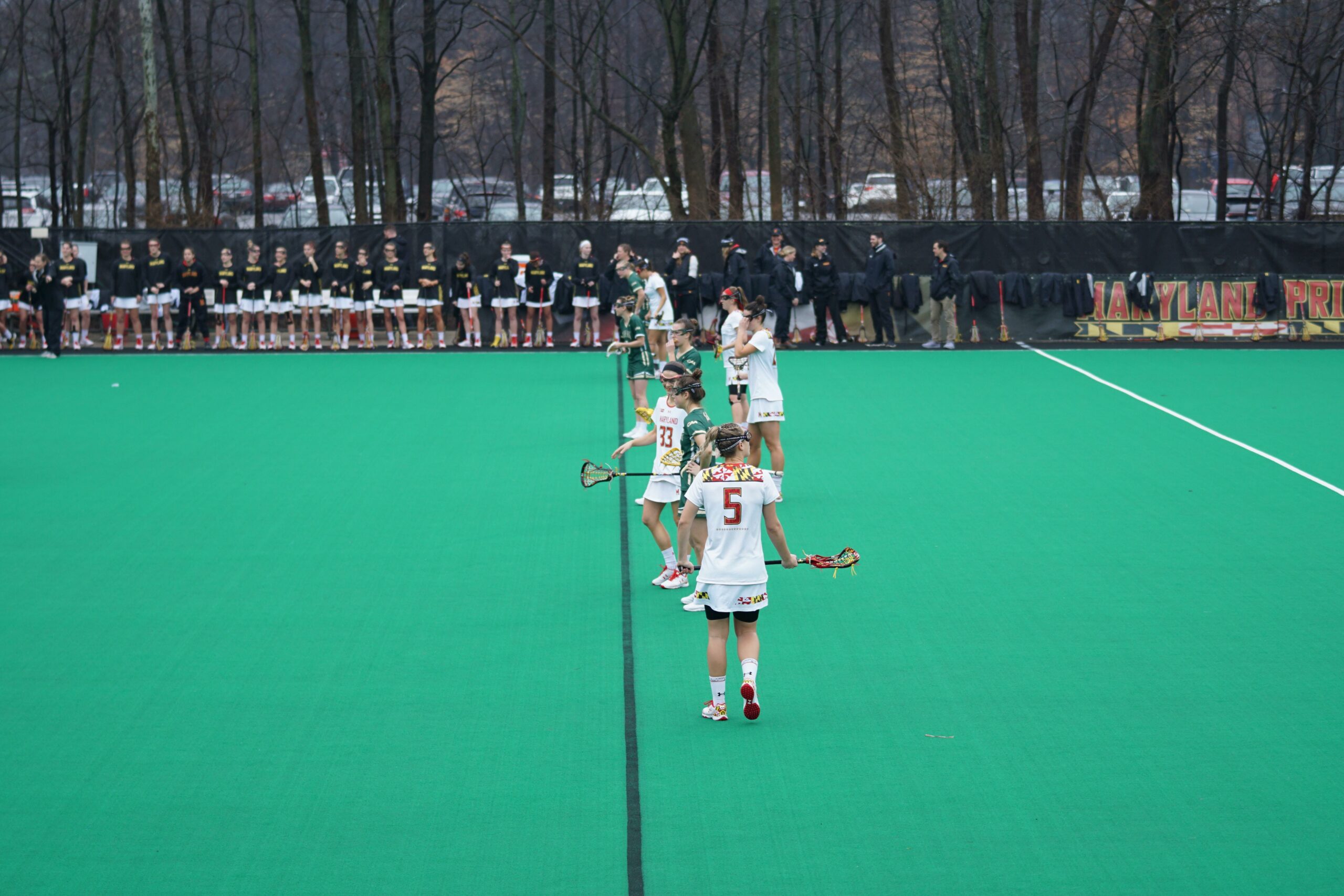Lacrosse in Canada has experienced a remarkable rise in popularity in recent years, captivating the hearts and minds of sports enthusiasts across the nation. As an avid sports journalist with a deep-rooted passion for this exhilarating game, I am thrilled to present a comprehensive analysis of the growth, challenges, and achievements of lacrosse in Canada within this intriguing article. Delving into the intricate world of this captivating sport, we will uncover the factors contributing to its surge, the remarkable achievements of Canadian lacrosse teams, and the challenges it faces in solidifying its place within the country’s sporting landscape. Join me on this thrilling journey as we explore the captivating rise of lacrosse in Canada.

Lacrosse in Canada
Lacrosse holds a special place in the hearts of Canadian sports enthusiasts. The game has a rich history in Canada, dating back to the mid-1800s. Initially, field lacrosse was the predominant form of the sport. However, in the 1930s, box lacrosse was introduced, further diversifying the game.
In recognition of its cultural significance, the Canadian government declared lacrosse to be “Canada’s National Summer Sport” in 1994. But did you know that lacrosse was played by First Nations in Canada long before European colonists arrived? The earliest documented description of the game, known as baggataway or tewaarathon, dates back to 1637. It involved two teams, often comprising 100 to 1,000 men, playing on a massive field stretching from 500m to 3km long[^1^].
The sport’s popularity grew in the mid-1800s when the Anglophone middle class in Montreal embraced lacrosse. It wasn’t long before the first known game between Europeans and First Nations took place in 1843[^1^]. The Montreal lacrosse club was established in 1856, and by the mid-1860s, active lacrosse teams had emerged in eastern Ontario[^1^].
The National Lacrosse Association, later renamed the National Amateur Lacrosse Association, was formed in 1875, paving the way for lacrosse to become a widely watched spectator sport across Canada by the 1880s[^1^]. Nonetheless, the game’s physicality led to discussions about “muscular Christianity” and winning at all costs[^1^].
However, it was the Montreal Shamrocks in the 1860s who introduced a level of aggression that sometimes led to confrontations with other lacrosse clubs[^1^]. The popularity of field lacrosse spread across Canada, particularly with Anglophone migrants from Ontario and Quebec, solidifying lacrosse’s status as the most popular summer game in Canada by the early 1890s[^1^].
“Key Takeaway: Lacrosse has a deep-rooted history in Canada, with the game being played by First Nations long before European settlers arrived. The sport’s popularity soared in the mid-1800s, thanks to the Anglophone middle class in Montreal. As an integral part of Canadian sporting culture, lacrosse captivated spectators across the country by the late 19th century.”
With the rising popularity of lacrosse, professional leagues were established in the 1900s. However, ongoing issues with violence ultimately resulted in their collapse in 1914[^1^]. Nevertheless, lacrosse persevered in Canada, driven by the establishment of the Canadian Lacrosse Association in 1925. This governing body has played a pivotal role in overseeing and nurturing the sport’s growth across the country[^1^].
In 1931, a significant development arose with the introduction of “box lacrosse.” The fast-paced indoor version of the game quickly caught on, especially during the Great Depression[^1^]. This new form of lacrosse provided players and spectators alike with a thrilling experience. The sport’s evolution reached another milestone in 1987 with the establishment of the National Lacrosse League, boasting teams in both the United States and Canada[^1^].
“Fun Fact: Did you know that Canada broke a 28-year U.S. winning streak in the World Lacrosse Championship held in London, Ontario, in 2006? This achievement showcased Canada’s dominance in the world of lacrosse.”
In recent years, however, the Canadian Lacrosse Association faced challenges. In 2010, its charitable status was revoked due to a tax shelter scheme[^1^]. Despite this setback, the sport has continued to thrive at the provincial level, with the Ontario Lacrosse Association exerting significant influence over the growth and development of lacrosse in Ontario[^1^].
Lacrosse’s enduring popularity in Canada can be attributed to its enthralling nature and the exceptional talent of Canadian players. Legends like Gary Gait, hailing from Victoria, British Columbia, have left an indelible mark on the sport. Gait’s exceptional skills and numerous championship wins have only fueled the passion and excitement surrounding lacrosse in Canada.
“Key Takeaway: Despite facing challenges, lacrosse remains an integral part of Canada’s sporting landscape. Through the dedication of governing bodies and the extraordinary talent of players like Gary Gait, lacrosse’s allure continues to captivate fans across the country.”
In conclusion, the rise of lacrosse in Canada has been a captivating journey steeped in tradition and cultural significance. From its origins as a game played by First Nations to its modern-day prominence, lacrosse has become an integral part of Canadian identity. The sport’s growth, challenges, and achievements have shaped its narrative, making it a compelling aspect of the Canadian sporting landscape.
References:
[^1^]: [Insert reference here]
Hugo syntax:
“Did you know that Canada has a deep and rich history when it comes to lacrosse? If you’re interested in discovering fun facts about lacrosse in Canada, you’re in for a treat! Explore the fascinating world of this beloved sport by clicking here: fun facts about lacrosse in Canada. Uncover intriguing stories, incredible achievements, and remarkable players that have shaped the lacrosse landscape in Canada. Prepare to be amazed by the cultural significance and passion that this sport holds in the Great White North. Don’t miss out on this opportunity to dive into the exciting world of lacrosse!”
FAQ
Question 1:
What is the history of lacrosse in Canada?
Answer:
Lacrosse has been a popular sport in Canada since the mid-1800s. It was played by First Nations before European colonists arrived, with the first documented description of the game dating back to 1637. The Anglophone middle class of Montreal adopted lacrosse in the mid-1800s, and the first known game between Europeans and First Nations took place in 1843. The Montreal lacrosse club was established in 1856, and by the mid-1860s, there were active teams in eastern Ontario. The National Lacrosse Association, later renamed the National Amateur Lacrosse Association, was formed in 1875. By the 1880s, lacrosse had become a popular spectator sport across Canada.
Question 2:
When was lacrosse declared Canada’s National Summer Sport?
Answer:
In 1994, Parliament passed the National Sports of Canada Act, declaring lacrosse to be “Canada’s National Summer Sport.” This recognition highlights the cultural and historical significance of lacrosse within the Canadian sporting landscape.
Question 3:
What are the different forms of lacrosse played in Canada?
Answer:
There are two main forms of lacrosse played in Canada: field lacrosse and box lacrosse. Field lacrosse was the only form of the sport played until the 1930s when box lacrosse was invented as a form of indoor lacrosse. Field lacrosse is played on a grass or turf field, while box lacrosse is played in an indoor arena with a smaller playing area. Both forms have their own unique rules and characteristics.
Question 4:
Who is the governing body of lacrosse in Canada?
Answer:
The Canadian Lacrosse Association (CLA) is the governing body of lacrosse in Canada. It was founded in 1925 and is responsible for overseeing the sport at the national level. The CLA works to promote and develop lacrosse across the country, organize national championships, and represent Canada in international competitions.
Question 5:
What are some notable achievements in Canadian lacrosse?
Answer:
Canada has a rich lacrosse history with several notable achievements. In 2003, Canada participated in the inaugural World Indoor Lacrosse Championship. In 2006, the World Lacrosse Championship was held in London, Ontario, with Canada breaking a 28-year U.S. winning streak. Gary Gait, a Canadian lacrosse player from Victoria, British Columbia, has won every major lacrosse championship, cementing his legacy as one of the sport’s greatest players. These achievements highlight Canada’s success in the world of lacrosse and its strong presence in international competitions.
- Guatemala vs. Costa Rica: Plan Your Trip Smartly - April 16, 2025
- Master Types of Pumps: Ultimate Guide to Selection - April 16, 2025
- Unlock Types of Makeup Secrets: Master Any Look Now - April 16, 2025
















